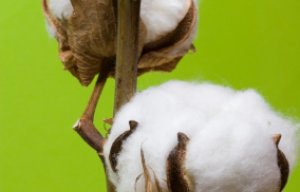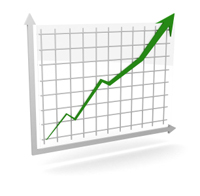
Damage caused by conventional fibres is driving eco-fibres market
CIRFS, the Brussels based European Man”made Fibres Association has published its latest statistical report on developments in the global man”made fibres industry. The report, ‘Information on Man”made Fibres' is the 47th edition of this valuable summary of the dynamic and growing man-made fibres industry. It brings together data on the production of acrylic, cellulosic, polyamide, polyester, polypropylene, wool and cotto

11th October 2011
Innovation in Textiles
|
Brussels

CIRFS, the Brussels based European Man”made Fibres Association has published its latest statistical report on developments in the global man”made fibres industry. The report, ‘Information on Man”made Fibres' is the 47th edition of this valuable summary of the dynamic and growing man-made fibres industry.
It brings together data on the production of acrylic, cellulosic, polyamide, polyester, polypropylene, wool and cotton fibres, in the world as a whole and in all the countries for which data exists.
It also covers consumption and uses, as well as world trade in man”made fibres, yarns and fabrics.
"This CIRFS report confirms the strong recovery of the world's man”made fibres industry in 2010, after the recession year of 2009. It shows the huge scale of global man”made fibres production, and their dominant share in world demand for fibres. 2011 is seeing a further recovery worldwide in man”made fibres production, albeit at a slower pace, but global growth will certainly continue in the future," CIRFS Director General Frédéric Van Houte commented, adding:
"Europe is the world's second largest producer of man”made fibres (after China). It is the world's largest exporter of acrylic and cellulosic fibres, and the biggest producer of ultra”high strength fibres and of polypropylene fibres. It is one of the global leaders in man”made fibres innovation and quality. Its output is used in a huge variety of applications, including fashion, home textiles and a lot of different technical uses."
According to CIRFS, the European man”made fibres industry is the largest supplier of raw materials to the European textile industry.
"Europe is also a leader in sustainable production of man”made fibres, using clean energy sources, with a low carbon footprint, with many raw materials based on renewable or recycled resources. Man”made fibres are light, durable, and their production requires little land and water compared with alternative products," added Mr Van Houte.
"They are extensively used in many environmental protection products and projects, such as filtration, flood prevention and protection of crops from climatic conditions."
"In this vast global industry, every producer and user of man”made fibres, as well as governments, banks, investors and consultants can benefit from the best possible information about industry trends and market size. This CIRFS publication is an important resource for all concerned, and CIRFS is delighted to make it available."
CIRFS is an association for Europe's € 11 billion man”made fibres industry, representing the industry to the European authorities and providing the industry with a wide range of services. Its members cover more than 85% of European man”made fibres output.
According to CIRFS, the European man”made fibres industry, with a production in 2010 of circa 4 million tonnes, is the world's second largest in terms of output and one of the global leaders in terms of innovation and quality.
Man”made fibres are used in every aspect of daily life: not only in apparel and furnishings, but also in automotive applications (interiors, insulation, seatbelts, airbags, tyres), industrial uses (conveyor belts, ropes, bulk containers, hoses, cable reinforcement), construction (geotextiles, cement reinforcement, insulation, weather protection), agriculture (agrotextiles) and much else. They can be precisely engineered with characteristics such as flame retardancy, bioactivity, strength, waterproofing, moisture management and warmth.

Business intelligence for the fibre, textiles and apparel industries: technologies, innovations, markets, investments, trade policy, sourcing, strategy...
Find out more